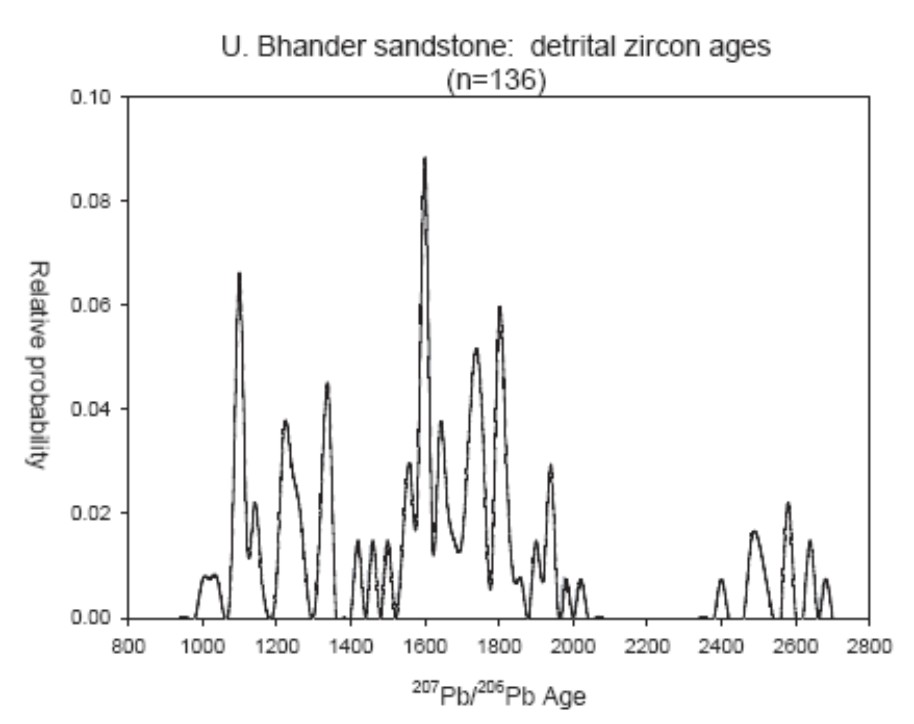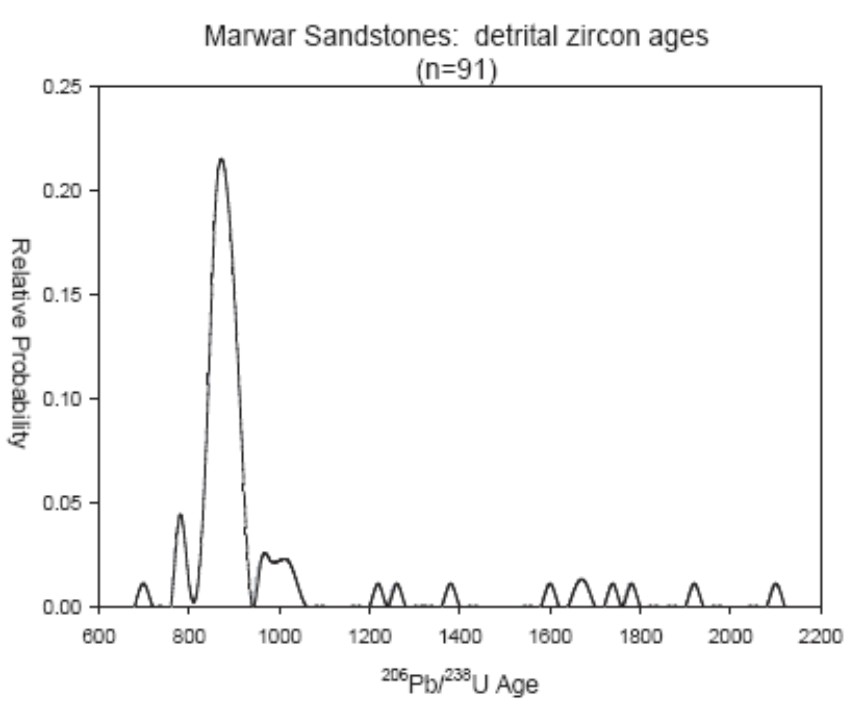Radiometric Dating-Getting the Age you want
If there is one thing I've learned in science it's to expect the unexpected (and then to publish it as fast as you can). We had a good learning experience in my research group this past week and it's an interesting tale of geochronology and the claim of young earth creationists that 'unwanted dates are thrown out'.
We are working on a project in the Vindhyanchal basin in north-central India. The basin is one of several sedimentary basins collectively referred to as "Purana Basins" in India. Almost by decree, the upper sedimentary sequences were assigned Cambrian-Ediacaran ages, but without any sound geochronology/fossils to back these estimates. A colleague of mine is working on another of the basins to the south of ours called the Chattisgarh basin.
Things began to get interesting last summer when my student began analyzing zircons contained in the sandstone layers within the basin. Zircon is a robust mineral (resistant to weathering and metamorphism). Zircon commonly contains uranium in the lattice structure making it ideal for U-Pb dating. By studying the recycled zircons in the sedimentary rock, we can estimate from the youngest zircons present a 'maximum age' for the rock. For example, if the sedimentary sequence contains recycled zircon that is 700 million years old, then the sedimentary rock has to be younger than 700 million years. How much less can be a problem, but suppose there are other younger source rocks for the zircon nearby (500 million years for example)---if these are not present in the sample, then we may be able to bracket the age to between 500-700 million years. It's not perfect by any means, but here's the rub.
Our 'Cambrian-Ediacaran' rocks currently sit adjacent to the third largest felsic igneous province in the world (read this as lots of zircon). We've dated this complex to 771 million years old. Presumably, a Cambrian-Ediacaran sandstone would be replete with 770 million year old zircons, but we found exactly zero! We have some magnetic data that also suggested that the rocks might be older than previously thought. The figure below shows the population of zircons we found. Barring other explanations for the lack of 770 Ma zircons, we might conclude that this rock is between 770-1000 million years old. The old end means these rocks are nearly 500 million years older than thought. Interesting, but the story gets better.
Intrigued, we asked my Indian colleague to collect rocks sitting stratigraphically above the 770 Ma igneous complex because they should contain 770 Ma zircons and they do. Therefore, these 770 Ma old rocks were eroding and supplying zircons to a nearby basin, but apparently not to ours. I described this to a friend working on the Chattisgarh basin and he said---Hmm, we have geochronologic data from our basin showing that the rocks there are 500 million years older than we thought. So, now we have two Purana basins with evidence that they are far older than we thought.
Did we bury the data? Hardly. It became a race to get published and sadly, our group has lost the race! It's a good lesson for my students because they realize that we are not the only ones thinking about these problems. It's a good lesson for creationists who accuse scientists of burying dates that disagree with what we previously thought. On top of that, it's darn good fun.
Cheers
Joe Meert




0 Comments:
Post a Comment
<< Home